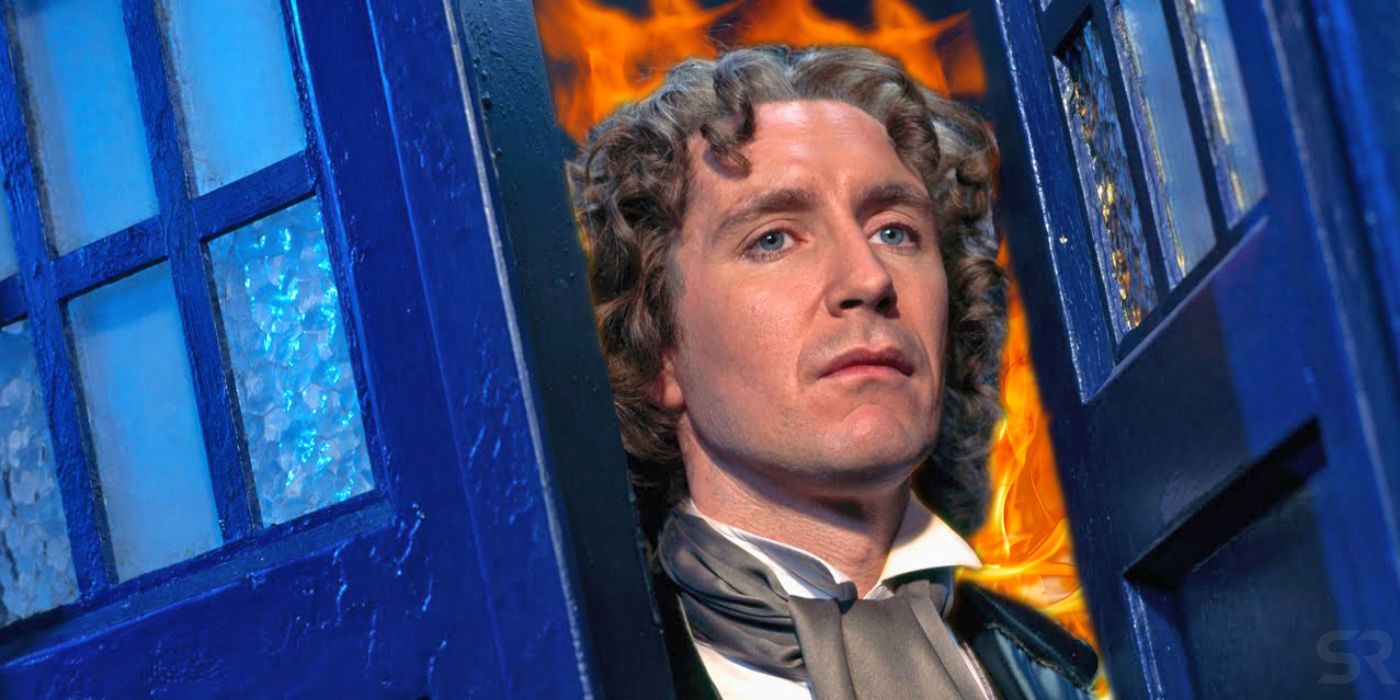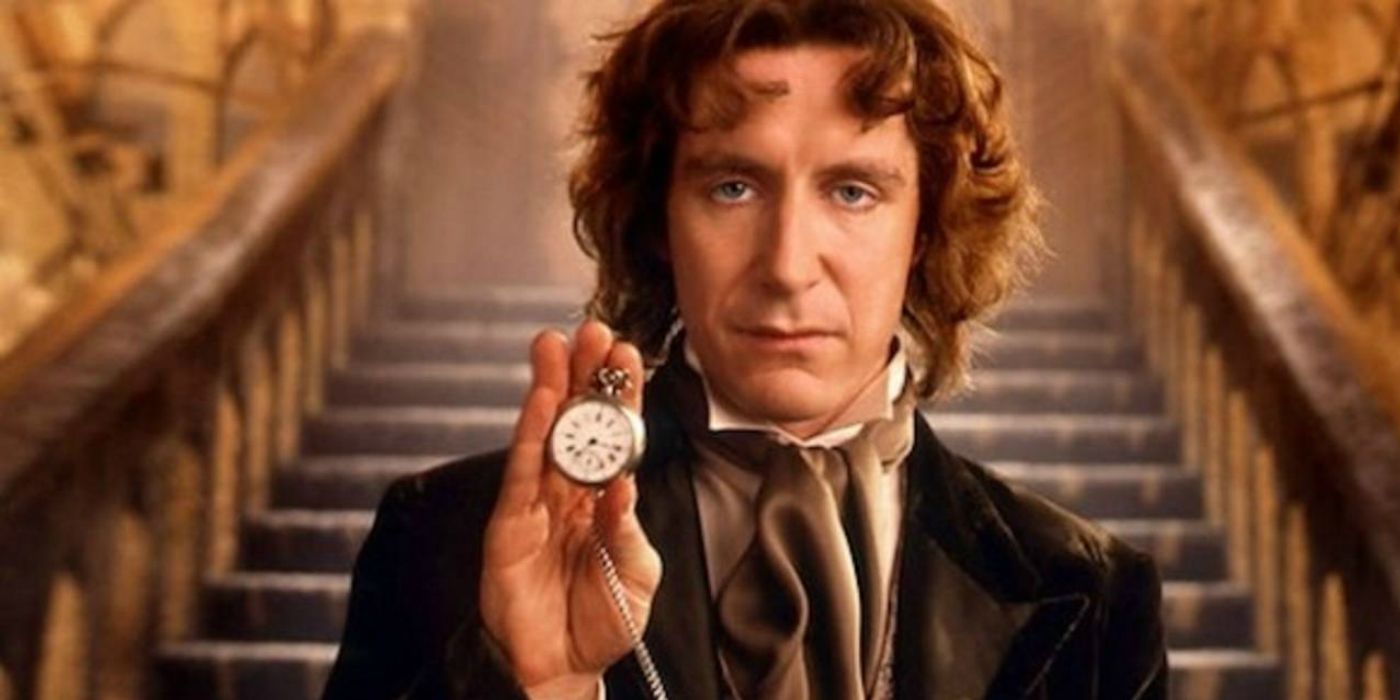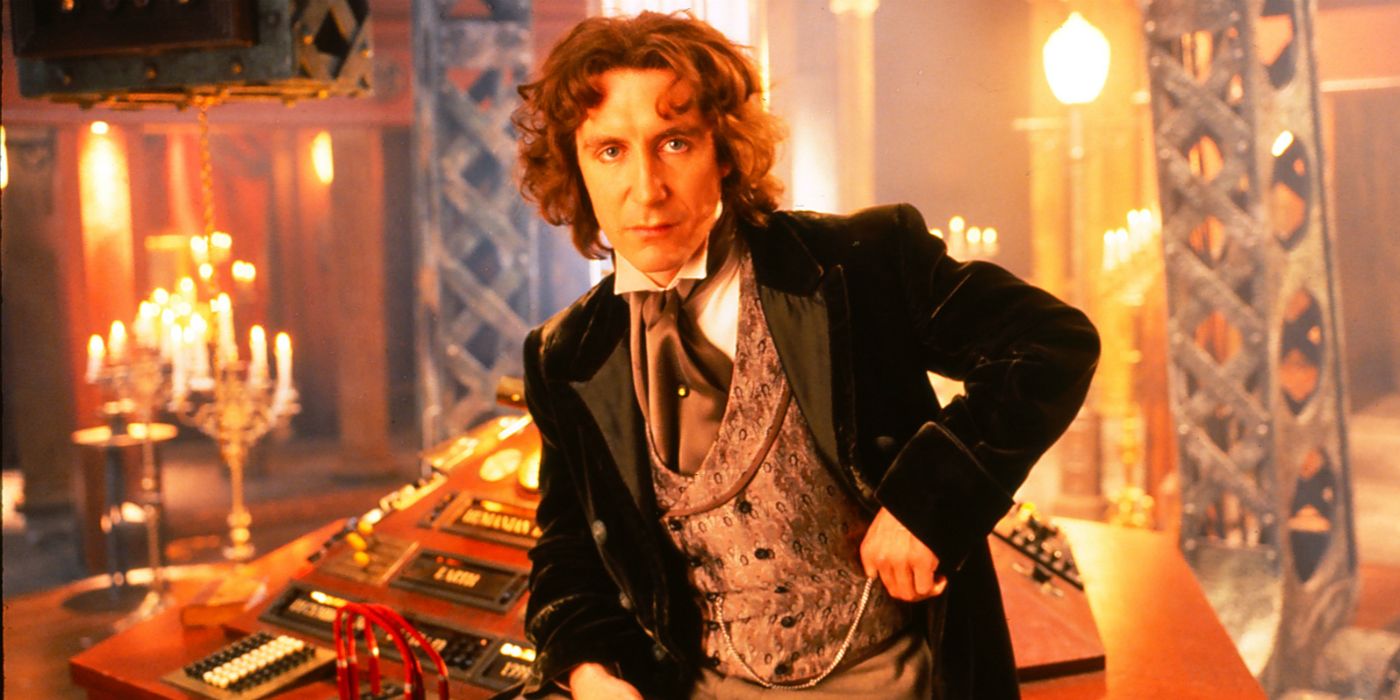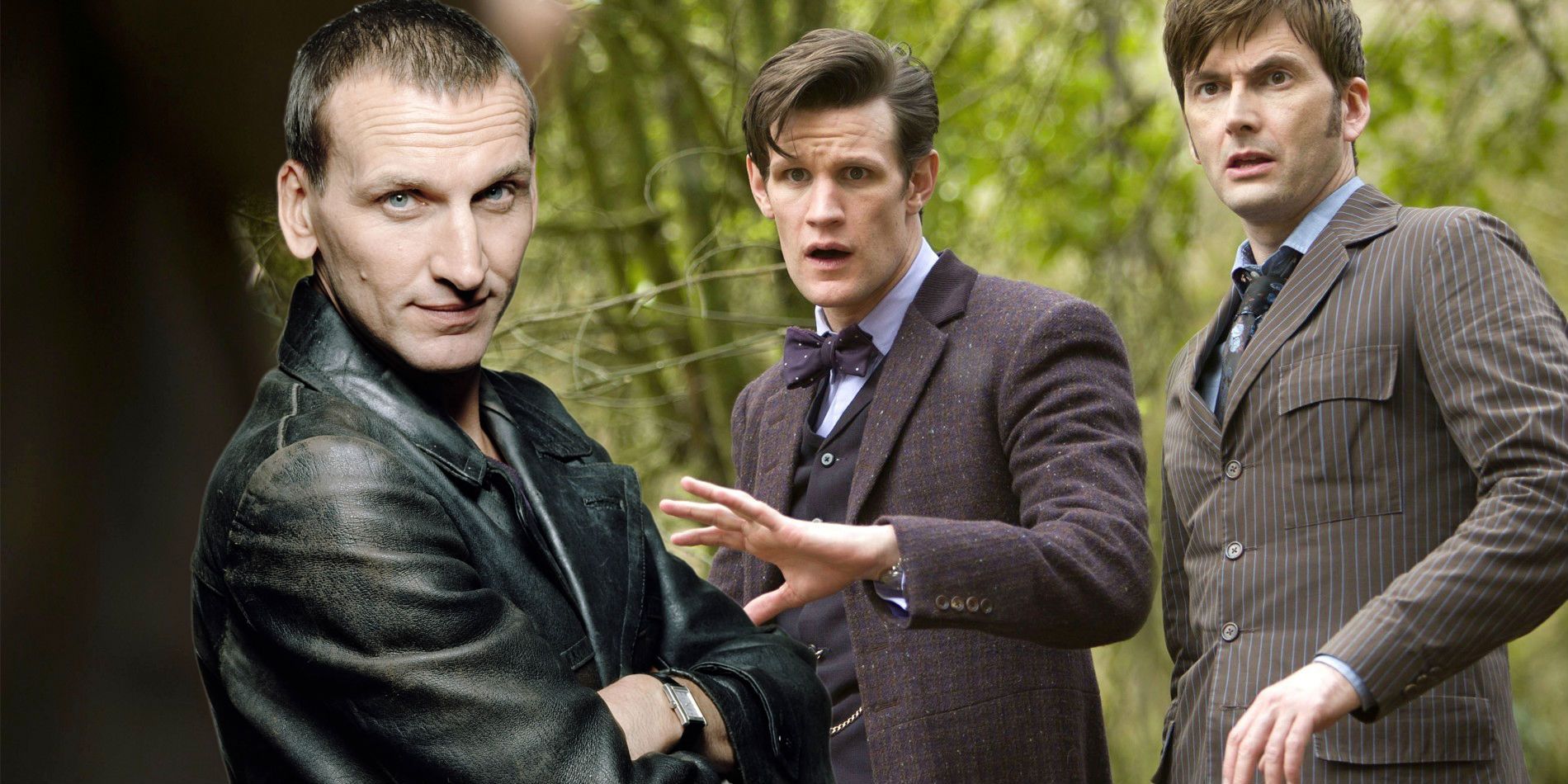The 1996 Doctor Who TV movie, starring Paul McGann, was a complete failure - despite the franchise as a whole being acclaimed. It's easy to forget that Doctor Who wasn't always a success. By the 1980s, viewing figures had been dropping for years, and hostile executives at the BBC sought to cancel the show outright. In 1989, they had their wish, and Sylvester McCoy's Seventh Doctor stepped into the TARDIS alongside his companion Ace for the last time.
Behind the scenes, though, there were still people who were clamoring for more time traveling adventures. One of them was producer Philip Segal, who intended to launch a new American-produced Doctor Who series. Unfortunately, the one network who showed any interest at all - Fox - would only commit to a single, made-for-TV movie. This was essentially intended as a proof of concept, and Segal hoped its success would lead to an American revival. Sadly, it's a matter of history that Segal's dreams never came to fruition. While British viewers were generally positive, in the US only 5.6 million tuned in, an audience share of just 9 percent.
At the time, most critics assumed that the failure of Paul McGann's Doctor Who movie proved that the time really had come for this classic British sci-fi series to be consigned to the history books. It's now clear that they were premature in that assessment, and Doctor Who is back, bigger than ever. But why didn't that made-for-TV film prove to be a success?
The Doctor Who Movie Didn't Target A Specific Audience
The core problem is that Philip Segal himself never really had a clear sense of who his film was aimed at. Was the Doctor Who TV movie trying to win over British viewers who'd grown up with the popular BBC series, or was the goal to establish a brand new audience in the United States? The answer seems to be "both," as though Segal thought he could hit two completely different targets with a single bullet. On the one hand, he attempted to create a stylish, modern, and frankly action-oriented update of Doctor Who for the US. He ditched the classic show's low-budget charm and actually dared to spend money on special effects; a touch of romance was added to make the Doctor more relatable, with the Doctor and his companion Grace Holloway sharing a kiss; and there was even a quite spectacular motorcycle chase.
On the other hand, though, with every draft the script became increasingly obsessed with Doctor Who continuity. The opening spiel - which, oddly, wasn't read by McGann - tossed out countless ideas at speed:
"This is the story of two hearts that learn to beat as one. It started on the distant planet Skaro where the Master was finally sentenced to die. He listened silent as the crimes of all twelve of his evil incarnations were read to him. Then he made his last and final request. He demanded that I, The Doctor, nemesis and rival Time Lord take his remains back to our home planet of Gallifrey. It was a request they never should have granted."
Imagine what those first 90 seconds are like for a casual viewer who's never watched an episode of Doctor Who before. Suddenly they're introduced to a wealth of concepts and ideas that they've never heard of, from Skaro to the Master, from the Time Lords to Gallifrey. What's more, just a few of these are even expanded upon as the story progresses; the Doctor never got to Gallifrey, and the Daleks and Skaro are nothing more than a prominently-placed Easter egg. It's no wonder American viewers were unimpressed, given this was well before Doctor Who became big in the States.
This Isn't How You Reintroduce The Doctor
The next problem, though, is that the Doctor Who TV movie didn't quite understand the show's own formula. The script is an interesting one, with the Doctor left amnesiac after a troubled regeneration and remembering who he is a little at a time. In theory, that should help make the character relatable, because viewers learn who he is at exactly the same rate he does himself. It allows the film to drip-feed information, rather than indulge in too many infodumps.
But there's a reason the show itself has seldom taken this approach, because the Doctor isn't supposed to be the one who's relatable at all. The Doctor is an enigma, as much a time-space event in his own right as he (or she) is a person. Depending on the story, the Doctor is the Messiah figure, the Chess grandmaster, Sherlock Holmes on the case, the omniscient narrator, or the madman who has a secret method. The companion is the one audiences are invited to relate to, the lens through which the Doctor's character and actions are supposed to be understood. This approach showcases all the complexity and contradictions that lie at the heart of the Doctor's identity, and it allows each Doctor to be presented as a distinctive character in their own right.
It's true that post-regeneration stories have usually shown the Doctor exhibiting signs of trauma, and as a result the Doctor Who movie can arguably just be presented as an extreme case. But it's an ill-thought-through approach, simply because the film was intended to relaunch the series. That essentially means Paul McGann's new version of the Doctor spends most of the time not knowing who he is, and audiences are left in the dark for most of the story as well, spending just the third act in the Doctor's company.
Why The Russell T. Davies Relaunch Got It Right
It's useful to contrast the Doctor Who movie with Russell T. Davies' relaunch in 2005. On the face of it, there are a number of key similarities; Davies' version of Doctor Who feels far more modern, moving at the same kind of accelerated pace Segal hoped for. Where classic Doctor Who was characterized by multi-episode plots, most modern stories are single-parters, with only an occasional two-parter. Various plot devices have been added to speed up the story, notably the psychic paper, which avoids the traditional trope of the Doctor having to prove himself and sometimes serves as a plot device to get the Doctor where he (or she) needs to be.
Another similarity between the two versions is the idea of a certain romantic frisson between the Doctor and his companions. Classic Doctor Who had never hinted at the idea, treating the Doctor as largely asexual (although there were references to the Doctor's family, such as his granddaughter). The Davies era, however, stressed the potential relationship between the Doctor and his companions; there was an over-long romance sub-plot with Rose, and the dynamic between David Tennant's Doctor and Martha felt almost like a rebound relationship. This carried through to the Moffat era, with his treatment of Matt Smith's Doctor and Amy Pond. Segal blazed the trail for this, with his kiss between McGann's Doctor and Grace Holloway.
But notice the differences. Davies' first Doctor was Christopher Eccleston, and - aside from a single line of dialogue suggesting he was freshly-regenerated - he stepped on to the screen fully formed. The first episode of the 2005 relaunch, "Rose", was focused entirely upon the titular companion, as she learned just who the Doctor is. It wasn't until the very end of the second episode, "The End of the World", that the first mentions of Doctor Who lore were made - with the Doctor talking about the Time War and the destruction of his race. What lore was introduced was done so because Davies intended to develop it, with the Daleks returning in force by the season finale. Davies had learned from Segal's mistakes, and avoided repeating them. As a result, his version of Doctor Who had the chance to breathe - and it proved a remarkable success.




